QuestionMy husband and I have just rescued an absolutely gorgeous approximately 2 yr old full blooded chocolate lab from a kill facility near Atlanta. We currently have an 8 year old yellow lab (Levi) and a 3 year old Boston Terrier (Garrett). Levi wasn't too happy about the new dog and Garrett was downright nasty. My husband put him in the back yard after Levi warmed up to him only to come back a few hours later to discover he had escaped. The escape included tunneling under our house and removing a heavy piece of plywood from a blocked passage and then knocking out a small vent. This 102 lb baby squeezed through and was having a ball wandering in the neighborhood. We ended up boarding him at our vet and making plans to have him neutered for his own safety!
We pick him up this afternoon. My husband has devised a kennel that looks escape proof but I'm wondering if this is going to be a continued problem. "Doc" heels, sits, comes, stays and fetches so I know he's been worked with by previous owner(s). He's intelligent and healthy. Aside from the socilaization issues with my Boston who in his mind, is THE BIG DOG, how can we help Doc feel welcome and not have to chase him down every day?
Thanks!
AnswerThere is a good reason why such a nice dog ended up at the shelter. It is posible he is a chewer, or somebody had to move to a pet free apartment, etc. More likely somebody tired of the warden role or he just got lost.
I am not a big fan of the outdoor kennels. Unless you line it with rocks or paving blocks or a concrete floor, he can still dig out. It is absolutely necewssary he has shelter and shade if you are going to leave him out there more than he needs to relieve himself.
When you aren't around, your dogs are better off in the house. In our modern society, even if we are home, other things distract us from the attention an uncrated puppy must have. The only real solution is to crate the dog when you aren't around. The dog may be happier in its den than loose in the house. It relaxes, it feels safe in its den. It rests, the body slows down reducing the need for water and relieving its self. Dogs that have been crated all along do very well. Many of them will rest in their crates even when the door is open. I think the plastic ones give the dog more of a safe, enclosed den feeling. They are also harder for the dog to get out. Metal ones can be put in a corner or covered with something the dog can't pull in and chew. Select a crate just big enough for the full grown dog to stretch out in.
102 pounds, a big boy indeed. Perhaps bigger than is good for him. See http://www.photolocker.net/images/Labman/proplanc.jpg Over weight due to over feeding is a huge problm with Labs.
Leave it some toys. Perhaps a Kong filled with peanut butter. Don't leave
anything in the crate the dog might chew up. It will do fine without even any
bedding. You will come home to a safe dog and a house you can enjoy.
A dog that has not been crated since it was little, may take some work.
Start out just putting its toys and treats in the crate. Praise it for going
in. Feed it in the crate. This is also an easy way to maintain order at
feeding time for more than one dog.
The "shut the puppy in a safe room" is a fallacy. Very few houses even have a
safe room. How many of us have a room with a hard surfaced floor and nothing
else? Most rooms have electrical cords to chew if nothing else. In addition
to destroying anything a bored puppy finds to chew, it may choke or have
intestinal blockage from the pieces. I had a friend that left her dog in a
"safe" room. It ate a hole in the floor covering. The safe rooms fail to
give the dog the comfort of the enclosed space their instinct requires. Nor
do they restrict activity extending the time the dog can go without relieving
itself.

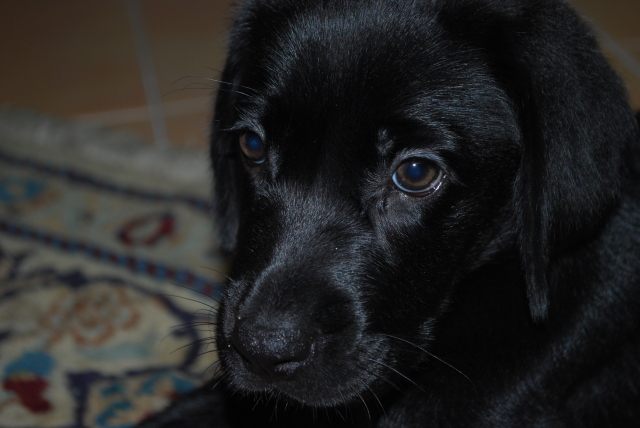 Labrador behaviour
Question
Gordie
Name: Gordie
Age: 4 months
Sex: Male
N
Labrador behaviour
Question
Gordie
Name: Gordie
Age: 4 months
Sex: Male
N
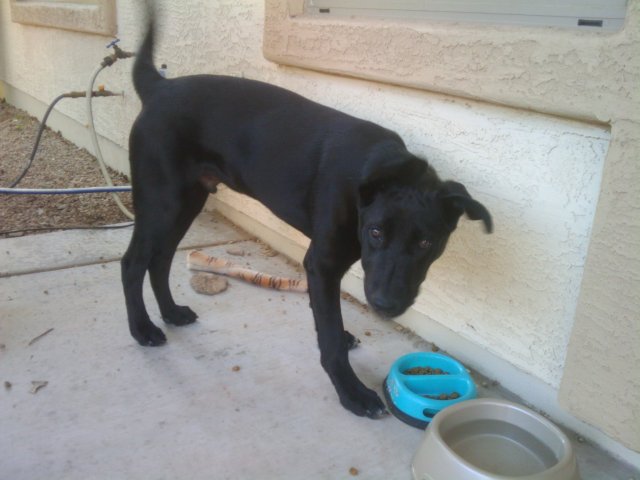 Black Lab age/weight concern
Question
Okimasu
I have a black lab mix. He has a small
Black Lab age/weight concern
Question
Okimasu
I have a black lab mix. He has a small
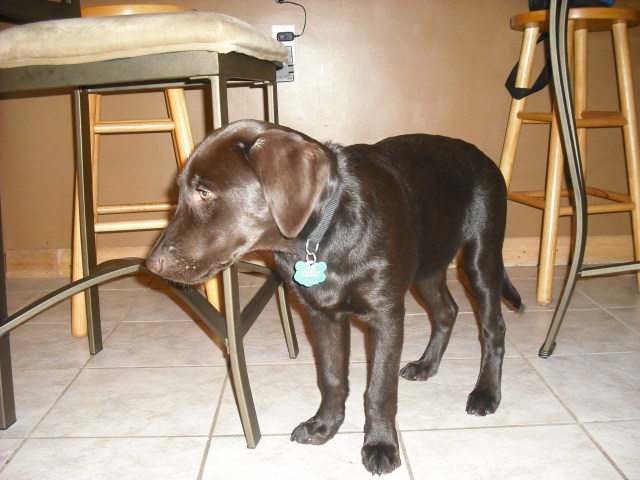 is my lab too small
Question
Reese
I have a 19 week old Male chocolate lab.
is my lab too small
Question
Reese
I have a 19 week old Male chocolate lab.
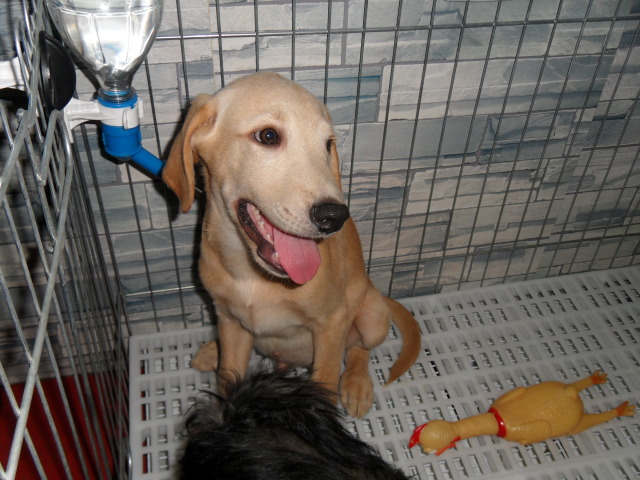 Is my dog a pure-bred lab?
Question
Sort of top view
Hi. I recently received
Is my dog a pure-bred lab?
Question
Sort of top view
Hi. I recently received
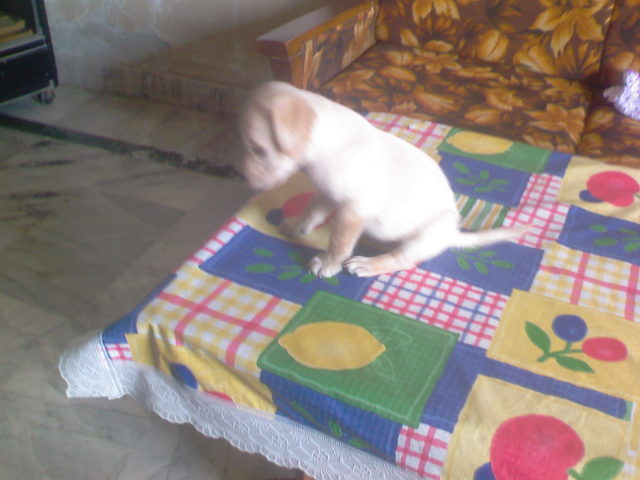 about my female dogs height
Question
sitting on table
i got a fawn coloured female
about my female dogs height
Question
sitting on table
i got a fawn coloured female